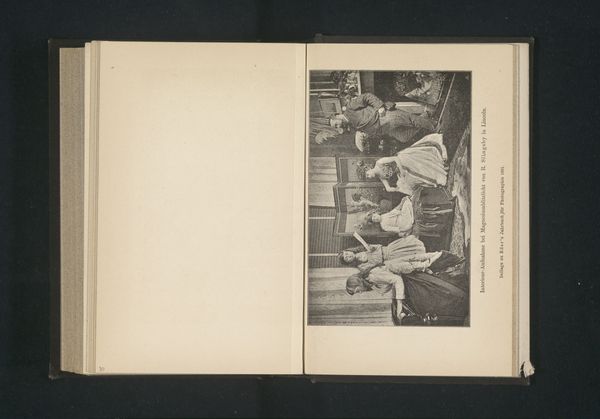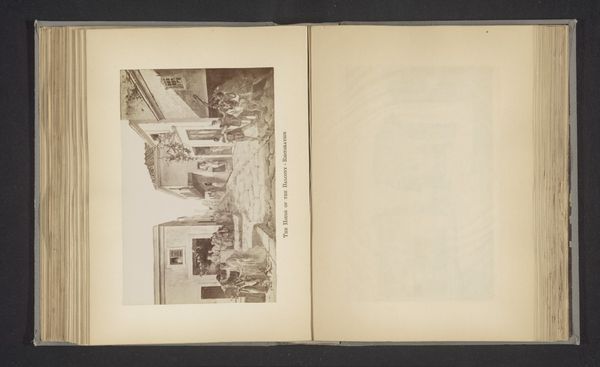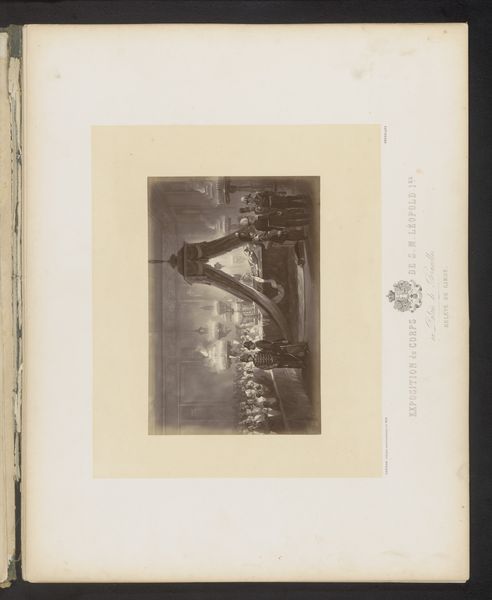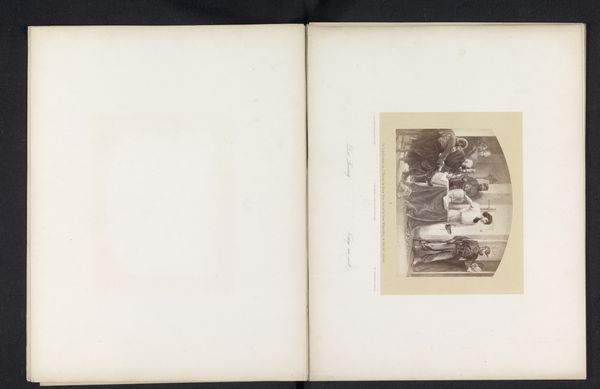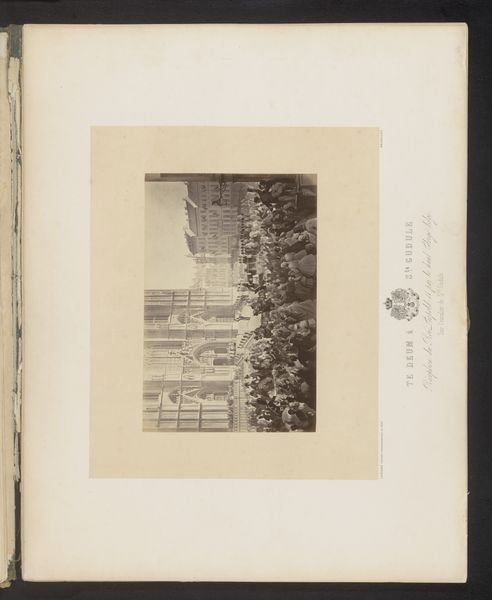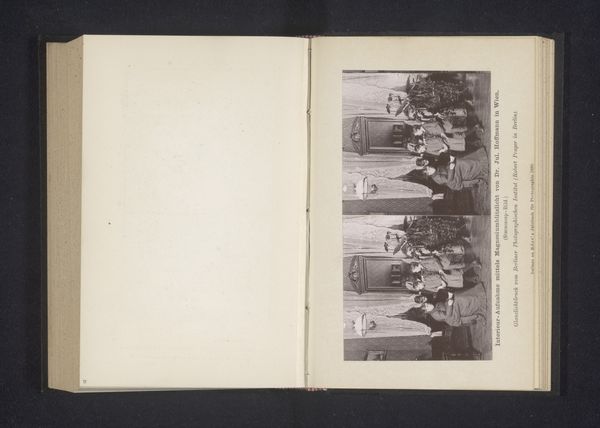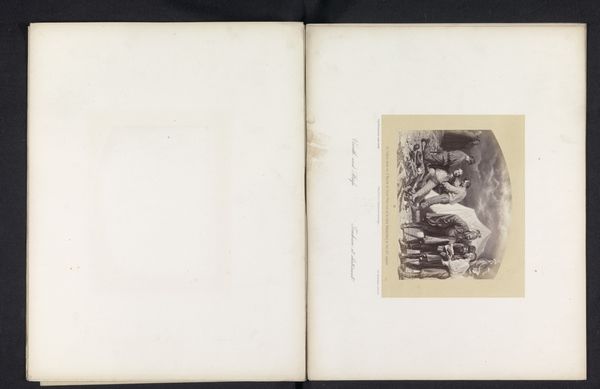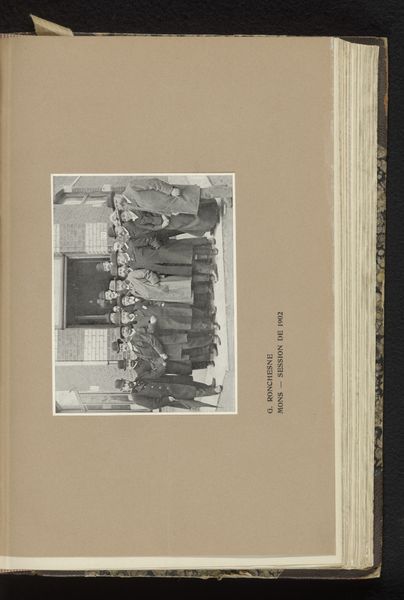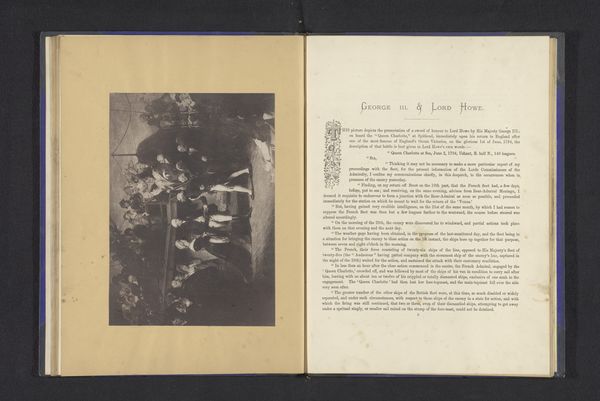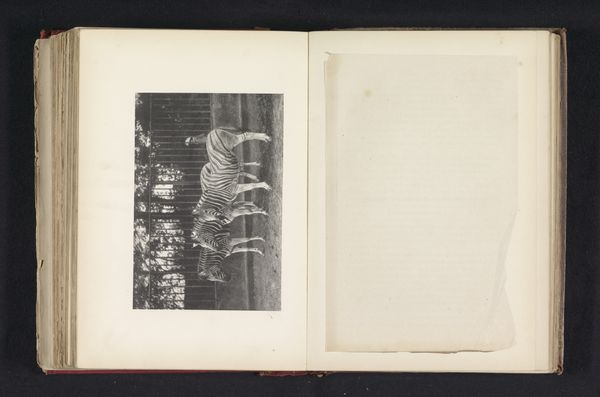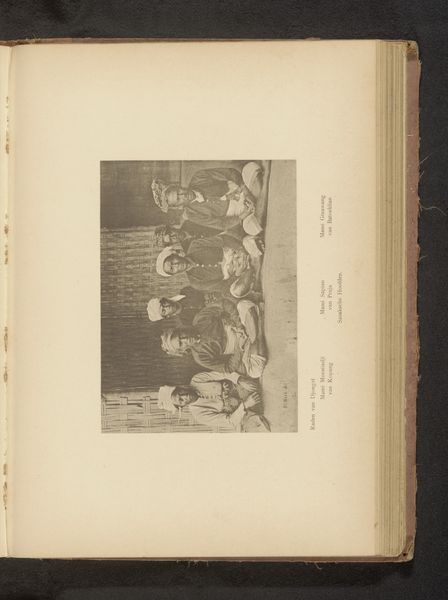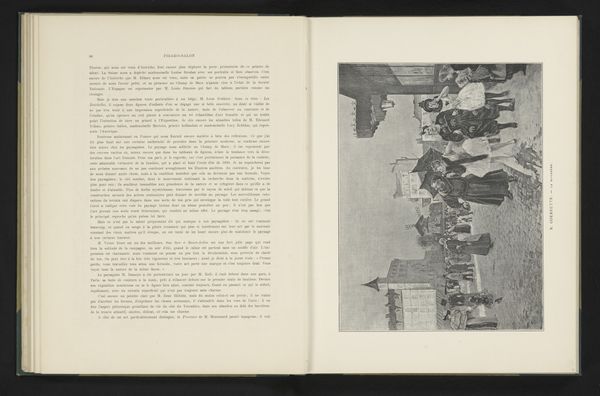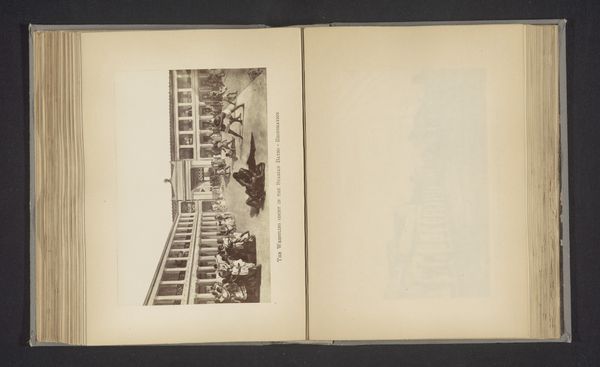
print, photography
# print
#
appropriation
#
landscape
#
photography
#
ancient-mediterranean
Dimensions: height 120 mm, width 186 mm
Copyright: Rijks Museum: Open Domain
Curator: Here we have a photographic print titled "Fotoreproductie van een gezicht op de rel van Pompeï en Nocerino," dating from before 1895. Editor: It feels surprisingly intimate, almost claustrophobic. There’s this flurry of bodies, frozen in what looks like either ecstatic joy or complete terror. It's strangely captivating. Curator: The image documents a mural depicting the riot between Pompeiians and Nocerians in 59 AD, during gladiatorial games. We're viewing a reproduction, through the lens of nineteenth-century photography, of a scene of ancient violence. It prompts reflections on spectacle, power dynamics, and representation itself. The act of photographing it recontextualizes its socio-political dimensions. Editor: The chaos depicted reminds me of Dionysian festivals and maenads. The overlapping bodies, the suggested movement…there's a visual echo of ecstatic religious frenzy. But framing it within the context of the Pompeian riot also recalls other symbols of societal unraveling and loss. Can we trace a recurring human impulse towards destruction through visual history? Curator: Precisely! This image operates as an intersectional artifact, connecting the ancient world to the then-contemporary obsession with excavating the past. What does it mean to appropriate an image of civil unrest? And who gets to tell this story and who is being represented? Editor: Looking at this image, I can't help thinking about collective memory. I wonder if viewers at the time recognized any inherent connection between the chaos represented in this fresco, captured through early photography, and other historical uprisings or collective experiences. What common thread did that audience then and do we now share in our interpretation? Curator: Right. The medium introduces a further layer: this print circulates a photographic impression, which records another artwork, making it something entirely novel in terms of dissemination. Editor: Thinking about what you just pointed out, perhaps it’s time to reimagine images such as these as timeless warnings of how our differences as people may be manipulated and exploited throughout history. Curator: Absolutely. We can draw fascinating insights from this collision of history, art, and media about the continuing reverberations of ancient events through subsequent eras.
Comments
No comments
Be the first to comment and join the conversation on the ultimate creative platform.
